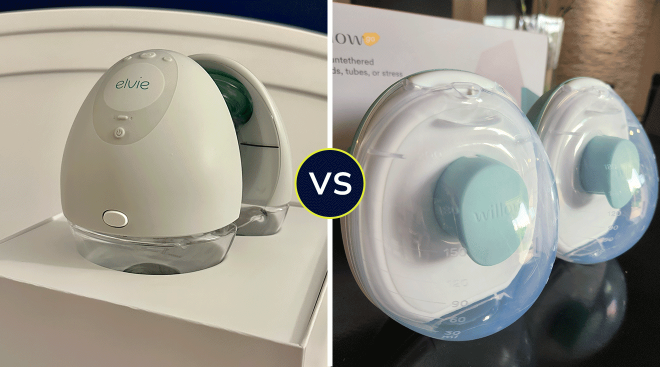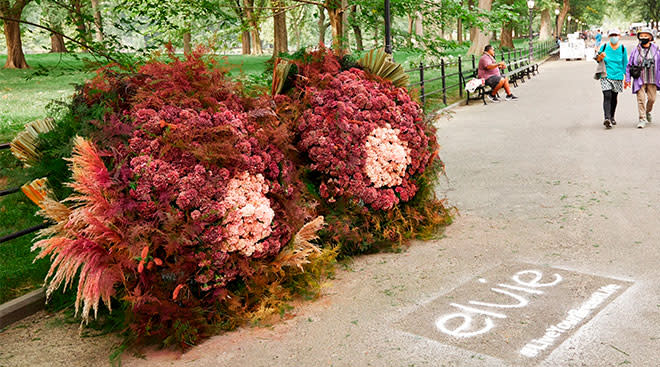Extended Breastfeeding 101: Everything You Need to Know
Does your toddler ask for “boobie” after snacktime, naptime—and, well, basically anytime? You’re not alone. For some, breastfeeding is a marathon, not a sprint. Past a child’s first birthday, it’s typically called “extended breastfeeding,” and there are many benefits for both Mom and baby. But there are challenges as well—a big one is the social stigma that can come with breastfeeding a toddler. Read on for everything you need to know about extended breastfeeding, including how to wean a toddler from breastfeeding when the time is right for both of you.
The term “extended breastfeeding” means different things in different cultures, but in the US it’s generally used to refer to breastfeeding after 12 months of age. Some people prefer to say “natural-term breastfeeding” or “full-term breastfeeding,” notes Amy Bassett, IBCLC, founder of Lactation Consultants of Central FL, who breastfed both of her children beyond the first year. “This is because the term ‘extended’ [with relation to] breastfeeding sometimes comes with negative connotations or insinuates that breastfeeding beyond 12 to 24 months is abnormal,” says Bassett.
Worldwide, the natural age of weaning is between 2 and 4 years old, according to Paediatrics & Child Health. But in the US, according to the Centers for Disease Control and Prevention (CDC), only 36 percent of 12-month-olds are still breastfed—although the rate has been steadily rising since 2007. Additionally, Black women have the lowest rates of breastfeeding due to a variety of barriers, according to the CDC.
In June 2022, the American Academy of Pediatrics (AAP) updated its guidelines to recommend exclusive breastfeeding for baby’s first six months, followed by extended breastfeeding up to age 2—along with a variety of nutritious food—if Mom and baby both want to. The AAP also encourages breastfeeding-supportive policies such as universal paid maternity leave, the right to breastfeed in public, and insurance coverage for lactation support and breast pumps.
Extended breastfeeding has a plethora of positives for Mom and baby. Below, a few pros to consider.
Benefits of extended breastfeeding for baby
According to Bassett, breastfeeding can potentially lower baby’s risk of:
Research also suggests that breastfeeding can have a positive impact on attachment security, children’s mental health and a child’s cognitive, social and emotional development.
All of these benefits continue beyond the first year. “It’s helpful to understand that at no point during the breastfeeding journey do the nutritional, immunological or psychological benefits stop or lessen,” Bassett says. What’s more, your breast milk evolves as baby grows: “One very cool fact about breast milk is that it changes with your baby,” Bassett says. Between 12 months and 2 years, breast milk contains higher concentrations of protein, lactoferrin, lysozyme and immunoglobulin A; and lower concentrations of zinc, calcium, iron and oligosaccharides, which is important for a toddler’s development, she says. “This means breast milk produced after the first year contains more fat and energy content to support increased physical activity.”
Benefits of extended breastfeeding for parents
Breastfeeding can potentially lower your risk of:
Bassett points out that a parent’s risk of breast cancer is reduced by 7 percent with each baby’s birth, and an additional 4.3 percent for every 12 months they breastfeed. “To put that into perspective, let’s use an example of a mom who birthed two children and [breastfed] each child for 12 months,” she says. “This mom would have a 22.6 percent reduced risk of developing breast cancer. Let’s compare that to a mom who also birthed two children but practiced ‘extended’ breastfeeding and nursed for a total of five years. This mom would have a 35.5 percent reduced risk of developing breast cancer!”
Research published in the Journal of Women’s Health suggests that breastfeeding can also help improve maternal mental health and reduce the risk of postpartum depression.
“Breastfeeding triggers the release of hormones like oxytocin, which promotes relaxation, bonding and can have positive effects on mood and stress reduction,” says Nicole Peluso, IBCLC, manager of lactation services and education at Lactation Link by Aeroflow Breastpumps. “Having a busy and unpredictable toddler is the perfect time to get a mood booster from breastfeeding!” That said, it’s important to know that breastfeeding challenges, such as latching problems, can also worsen mental health. It’s a subjective experience for every breastfeeding parent.
There are undeniable benefits to extended breastfeeding, but there are also some serious challenges to take into account. Below, some of the most common pain points.
Stigma around extended breastfeeding
While breastfeeding older babies and toddlers is celebrated in some countries, in the US, cultural attitudes don’t necessarily support extended breastfeeding, says Bassett. “Shaming and guilt from outsiders often revolve around the sexualization of breastfeeding, discouragement of breastfeeding in public and the idea that moms who choose to continue breastfeeding are doing so out of their own fears or desire to encourage an ‘unhealthy’ attachment with their children,” she adds.
Louise Herbert, IMH, LC, NDC, a lactation consultant, pediatric sleep specialist and mom of two, says that many people, particularly in the Western world, are raised without exposure to others who practice extended breastfeeding. “With low breastfeeding rates, it’s extremely rare to meet another mom who might be breastfeeding into and through toddlerhood, and so it’s rarely discussed,” she says. Herbert has advice on dealing with judgmental comments: “My rule of thumb is that I care more about my baby’s needs than other people’s opinions. I advocate for protecting our energy as moms. It’s not our job to ‘convince’ or ‘prove’ our choices to anybody else.”
Dipesh Navsaria, MD, an associate professor of pediatrics at the University of Wisconsin-Madison, offers a slightly different perspective on the stigma around extended breastfeeding: “I think some view it as keeping the child as an infant, even as they get older. As with many parenting practices, something that’s ‘different’—even if there’s no evidence of harm—is often the subject of judgment by others. As long as both the parent and child still wish to nurse, there’s nothing wrong with it."
It can take a mental toll
Peluso says that extended breastfeeding can sometimes feel overwhelming and exhausting, particularly if you’re also juggling work and other demands. It’s all too easy to put pressure on yourself and feel guilty when you feel like you’re not doing “enough.” It’s also not uncommon to feel “touched out” at the end of a long day—or in the middle of the night. If you’re struggling, it’s always a good idea to reach out to a resource like the National Maternal Mental Health Hotline.
Time constraints
“Not all parents have the privilege to be able to continue nursing,” says Navsaria. Be kind to yourself once you have to or want to stop—whether it’s to go back to work, because of an illness or for a mental health reason. Keep in mind that all breastfeeding has benefits, and there’s no rule that you have to make it to a certain age.
It’s not always comfortable
As anyone who has experience with breastfeeding toddlers knows, it can be physically challenging—to say the least. “Despite a mother’s best effort to cajole her toddler into a nursing position, the toddler may have very strong preferences for which position is most comfortable, allows them to do other things (like hold or play with a toy), allows them to view the world around them or seems optimal for snuggles that turn into sleep,” says Peluso. “At that age, it might be difficult to convince a baby otherwise.” Moreover, toddlers have more teeth, budding personalities and strong wills, and sometimes they’re not the gentlest of creatures.
To make extended breastfeeding less stressful, here are a few tips to keep in mind.
Let go of the idea of perfection
Bassett points out that toddlers will generally figure it out: “‘Gymnurstics’ is the norm when breastfeeding toddlers and because they’re so efficient at the breast, precision and the ‘perfect’ latch are no longer necessary to ensure good feeds,” she says.
Don’t get too caught up in the schedule
Bassett says that at 12 months, many toddlers are breastfeeding three to four times a day and eating solid foods for breakfast, lunch and dinner. She says families of toddlers often follow a schedule that looks like this:
- Nursing upon wakeup
- Breakfast within 30 to 60 minutes of waking
- Lunch within three to five hours of waking
- Nursing before and/or after their nap(s)
- Dinner around 60 to 90 minutes before bedtime
- A final breastfeeding session just before bed
Show yourself grace
Extended breastfeeding—and, really, all breastfeeding—is hard. Give yourself a pat on the back, and don’t feel bad if you can’t be there for your baby or toddler 100 percent of the time. You need time for yourself.
At some point in your extended breastfeeding journey, you might wonder how to wean a toddler from breastfeeding. Slow and steady wins the race, says Herbert. “Weaning doesn’t have to be ‘all or nothing,’” she says. “We can set gentle limits, create nursing boundaries or teach ‘nursing manners’ if we need a little space; or, we can drop just one or two feeds and see how that feels. Similarly, we might want to night wean, or partially wean, before going straight to full weaning.” Going slowly can help you avoid engorgement and mastitis, as well as any hormonal and emotional effects of weaning, she says.
If your breastfeeding schedule is unpredictable, “try offering alternatives to breastfeeding when your child seeks comfort or closeness,” Peluso says. Anything that grabs their attention: Read a book, play a game or go for a walk—or provide comfort through cuddling, gentle massages or soothing words.
And if you and your child aren’t ready to wean, that’s fine too. There’s no rush. There is no definitive timeline with extended breastfeeding. It’s not the right route for everyone, but if you choose to continue on your journey, it can be a wonderful (and healthy!) experience for you and your child.
Please note: The Bump and the materials and information it contains are not intended to, and do not constitute, medical or other health advice or diagnosis and should not be used as such. You should always consult with a qualified physician or health professional about your specific circumstances.
Plus, more from The Bump:
Amy Bassett, BA, CLC, ALC, IBCLC, RLC, is the founder of Lactation Consultants of Central FL. She has over eight years of experience as a lactation consultant.
Louise Herbert, IMH, LC, NDC, is a lactation consultant, pediatric sleep specialist and mom of two, as well as the author of a guide on gentle weaning.
Dipesh Navsaria, MPH, MSLIS, MD, is an associate professor of pediatrics at the University of Wisconsin-Madison and a spokesperson for the American Academy of Pediatrics. He earned his medical degree from the University of Illinois College of Medicine in Chicago.
Nicole Peluso, IBCLC, CD, CAHPE, is the manager of lactation services and education at Lactation Link by Aeroflow Breastpumps. She is also a parenting educator certified by Attachment Parenting International, and a birth and postpartum doula trained at the National Midwifery Institute.
Aeroflow Breastpumps, New Survey Highlights the Need for Increased Access to Breastfeeding Resources, August 2022
Paediatrics & Child Health, Weaning from the Breast, April 2004
Centers for Disease Control and Prevention, Breastfeeding Report Card, August 2022
Centers for Disease Control and Prevention, Racial and Ethnic Disparities in Breastfeeding Initiation — United States, 2019, May 2021
American Academy of Pediatrics, American Academy of Pediatrics Calls for More Support for Breastfeeding Mothers Within Updated Policy Recommendations, June 2022
Nutrients, Breastfeeding and the Developmental Origins of Asthma: Current Evidence, Possible Mechanisms, and Future Research Priorities, July 2018
Plos One, Likelihood of Infectious Diseases Due to Lack of Exclusive Breastfeeding Among Infants in Bangladesh, February 2022
Karger, Association between Characteristics at Birth, Breastfeeding and Obesity in 22 Countries: The WHO European Childhood Obesity Surveillance Initiative – COSI 2015/2017, April 2019
World Health Organization, Long-Term Effects of Breastfeeding: A Systematic Review, 2013
BMC Medicine, Breastfeeding and the Risk of Childhood Cancer: A Systematic Review and Dose-Response Meta-Analysis, April 2021
Pediatrics (American Academy of Pediatrics), Breastfeeding and Reduced Risk of Sudden Infant Death Syndrome: A Meta-Analysis, July 2011
Midwifery, The Association Between Breastfeeding and Attachment: A Systematic Review, February 2020
Nutrients, Breastfeeding and Active Bonding Protects against Children’s Internalizing Behavior Problems, December 2013
Plos One, To What Extent Does Confounding Explain the Association Between Breastfeeding Duration and Cognitive Development Up to Age 14? Findings from the UK Millennium Cohort Study, May 2022
Bundesgesundheitsblatt - Gesundheitsforschung - Gesundheitsschutz, Psychological Effects of Breastfeeding on Children and Mothers, June 2018
Maternal & Child Nutrition, A Longitudinal Study of Human Milk Composition in the Second Year Postpartum: Implications for Human Milk Banking, January 2017
Cancer Medicine, Breastfeeding Reduces the Risk of Breast Cancer: A Call for Action in High-Income Countries with Low Rates of Breastfeeding, September 2022
Acta Paediatrica, Breastfeeding and Maternal Health Outcomes: A Systematic Review and Meta-Analysis, July 2015
Diabetologia, Breastfeeding and Maternal Risk of Type 2 Diabetes: A Prospective Study and Meta-Analysis, May 2014
Journal of Women’s Health, Breastfeeding Duration and the Risk of Coronary Artery Disease, January 2019
Journal of Women’s Health, The Effects of Breastfeeding on Maternal Mental Health: A Systematic Review, June 2022
World Health Organization, Infant and Young Child Feeding: Model Chapter for Textbooks for Medical Students and Allied Health Professionals, 2009
Learn how we ensure the accuracy of our content through our editorial and medical review process.
Navigate forward to interact with the calendar and select a date. Press the question mark key to get the keyboard shortcuts for changing dates.




















































